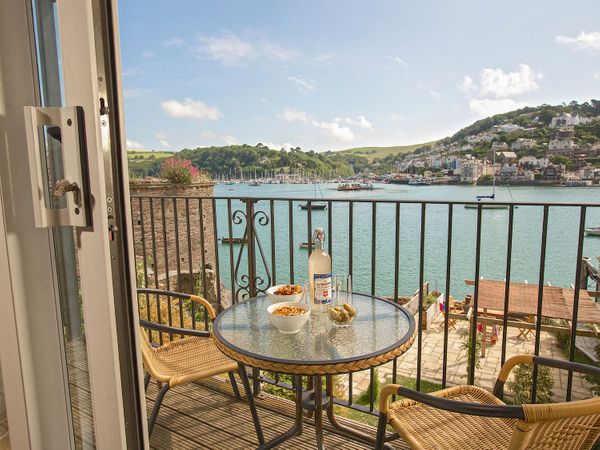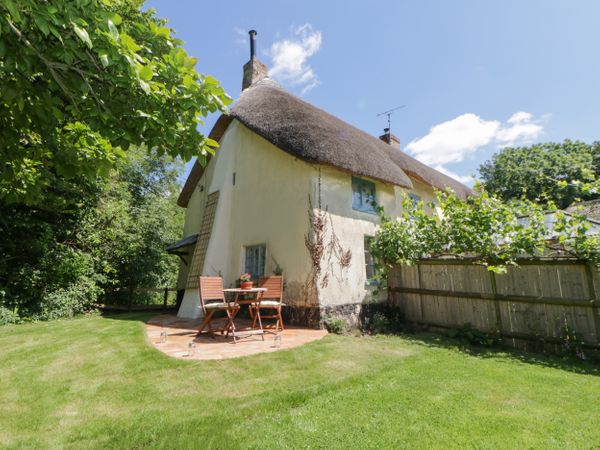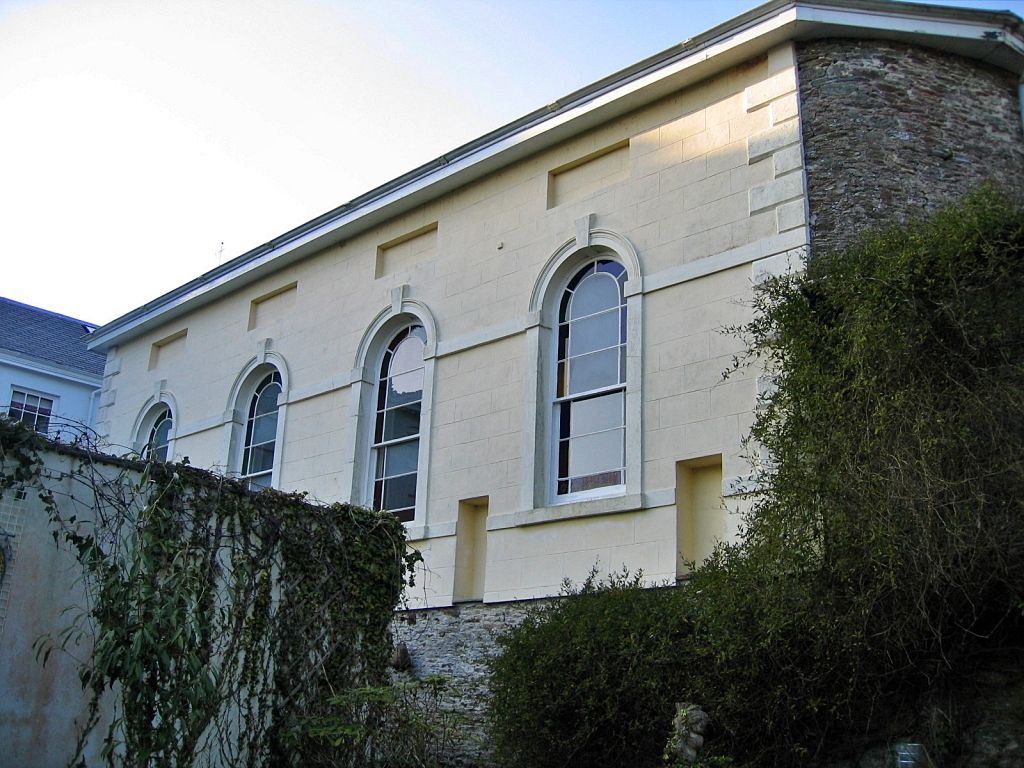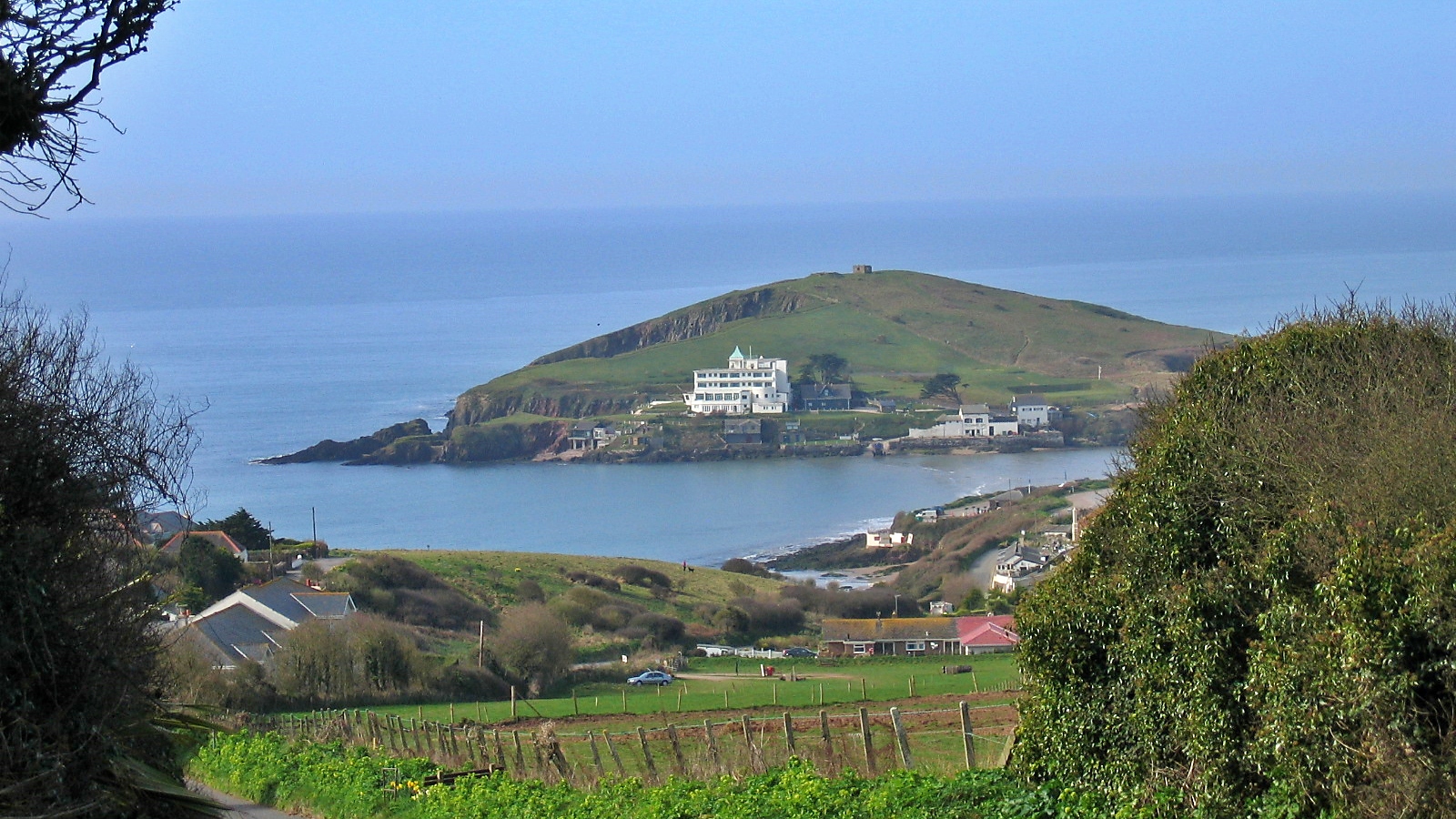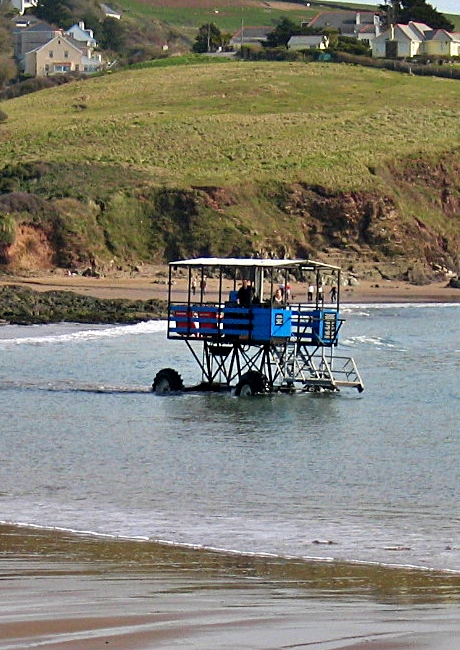Lydford Castle
The beautiful village of Lydford can be found on the western edge of Dartmoor, approximately midway between Tavistock and Okehampton, and close to Brentor. Lydford grew out of a Saxon burh, or fortified settlement, called Llidan established by King Alfred the Great in the late 9th century. It's situation, on a triangular shaped headland with deep river valleys on two sides, gave it an excellent defensive position. No wonder then, that soon after the Norman conquest in 1066, the Normans built the first Lydford Castle on the site.
Back in Saxon times, the tin trade made Lydford a prosperous and important town. Between 973 and 1066, the town had its own mint which produced more than 1.5 million silver pennies. Lydford's wealth attracted the Vikings, who attacked the town in 937. They were beaten back by Lydford's strong defences, many of which can still be seen today.
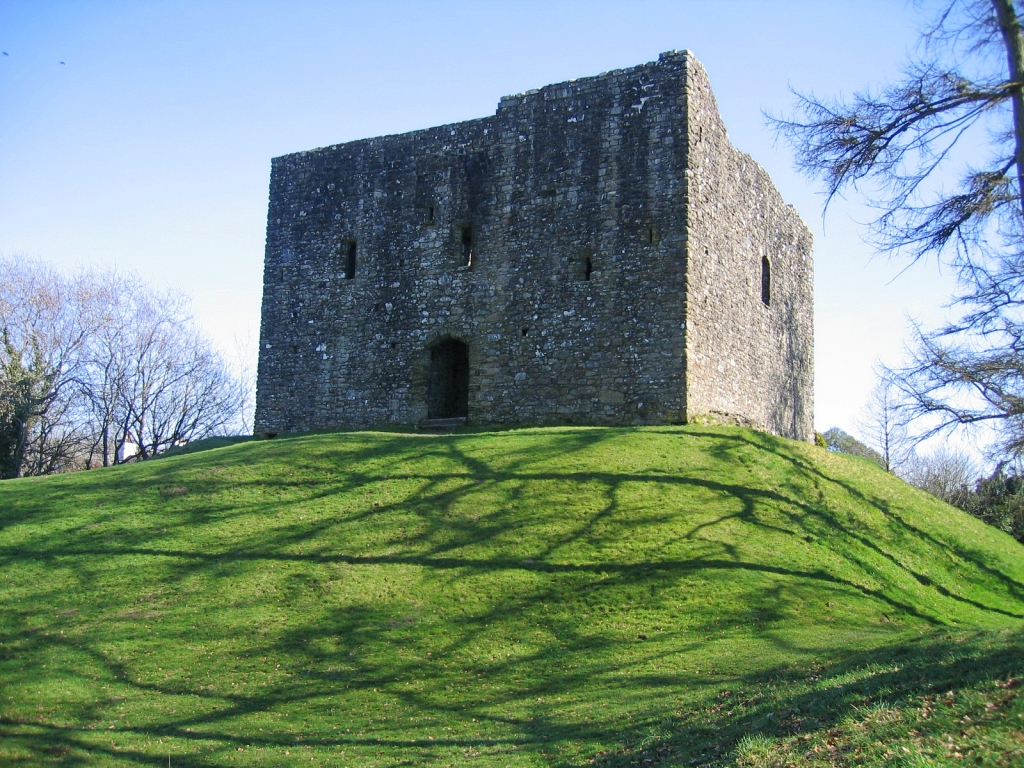 Lydford Castle Tower © essentially-england.com
Lydford Castle Tower © essentially-england.comThe History of Lydford
Castle
Not long after taking Exeter in 1068, the Norman’s started building castles in Devon. One of these castles rose within the Saxon defences of Lydford. It consisted of an earth and timber motte made from the spoil of a semi-circular ditch. Archaeologists have found evidence of five wooden buildings within the castle. This early iteration of Lydford Castle was abandoned in the 12th century after the buildings caught fire whilst being used to store grain. The site of the first castle is now often referred to as the Norman Fort.
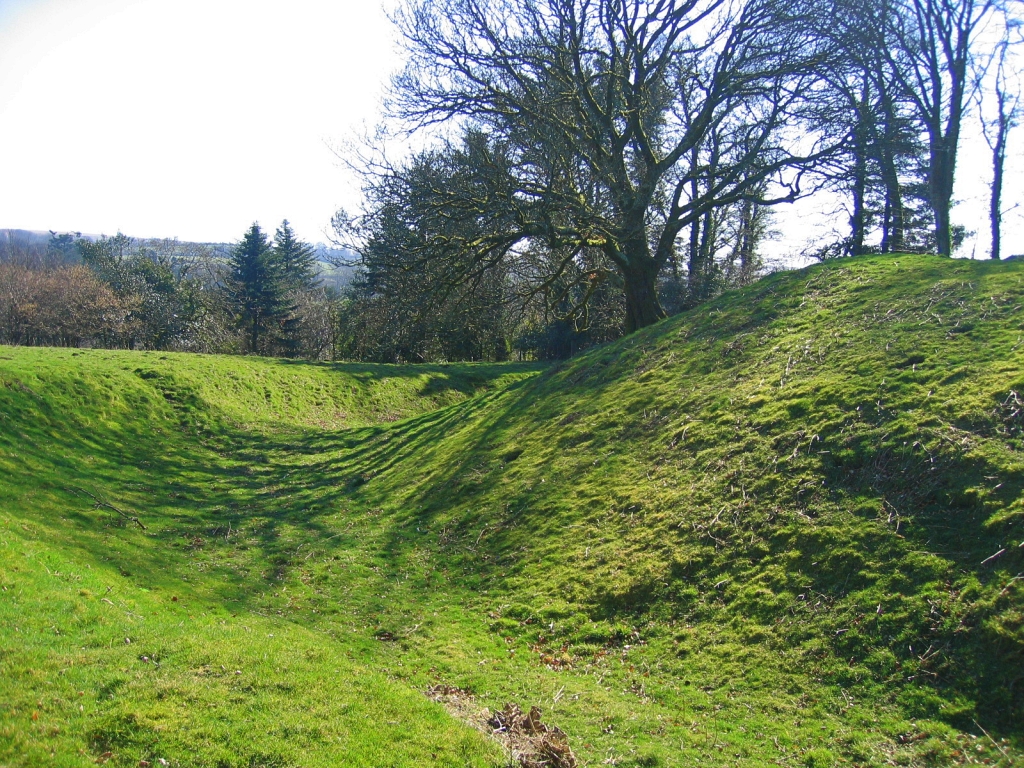 The Norman Fort at Lydford Castle © essentially-england.com
The Norman Fort at Lydford Castle © essentially-england.comDuring the Norman period, Lydford became the administrative centre of the Forest of Dartmoor and continued to govern the tin industry within Devon and Cornwall. To understand how important the town had become, it's worth knowing that at the time the Domesday Book was compiled in 1086, Lydford gathered more tax than London!
The second Lydford Castle was built in 1195 and included a stone tower and bailey protected by deep ditches and ramparts. Although King John garrisoned the castle at one time, it was more of an administrative centre, court room and prison, which over time gained a reputation for its harsh sentences and the conditions within its prison. During the 13th century, the stone tower was rebuilt, and a mound piled up around its base, making it look much like the older Norman motte and bailey castles. The reason for the mound is not known, but maybe it made the lower-floor cells even more damp and uncomfortable for the prisoners held there.
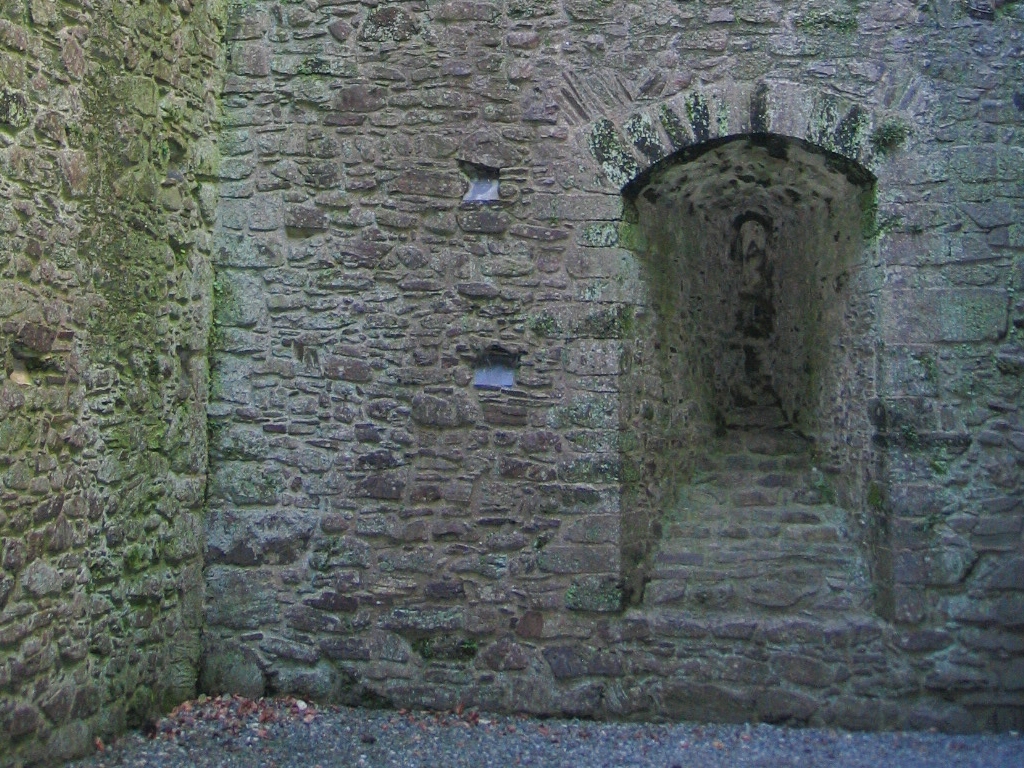 In the Prison Cells of Lydford Castle © essentially-england.com
In the Prison Cells of Lydford Castle © essentially-england.comThe castle continued to be used as a prison until the 18th century while going through stages of falling into decay and being refurbished. Prisoners were held there no matter what state the castle was in. During periods of decay, the prisoner’s sentences just became even more uncomfortable. The harshness of Lydford Castle punishments were captured by the Devon poet William Browne in the early 17th century in his often-quoted work “Lydford Journey”:
I OFT have heard of Lydford law,
How in the morn they hang and draw,
And sit in judgment after:
At first I wonder'd at it much;
But now I find their reason such,
That it deserves no laughter.
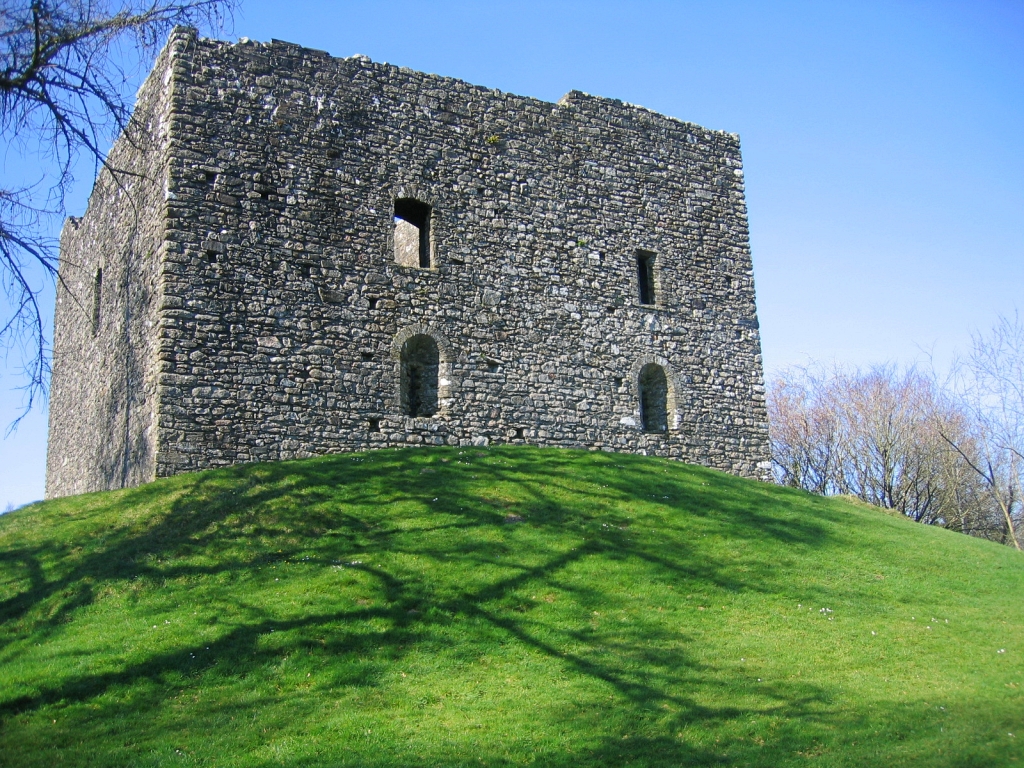 Lydford Castle © essentially-england.com
Lydford Castle © essentially-england.comThe Lydford Castle Ghost
All good castles deserve a ghost and Lydford Castle is said to be haunted by one of the most feared and hated judges in England. The story goes that Judge Jeffreys, the “Hanging Judge”, who held court in many of Devon's towns in the late 1600’s, lived up to the castle's courthouse reputation and handed out extremely harsh sentences. Local legend has it that he still roams the castle and grounds in the form of a large, ugly black pig.
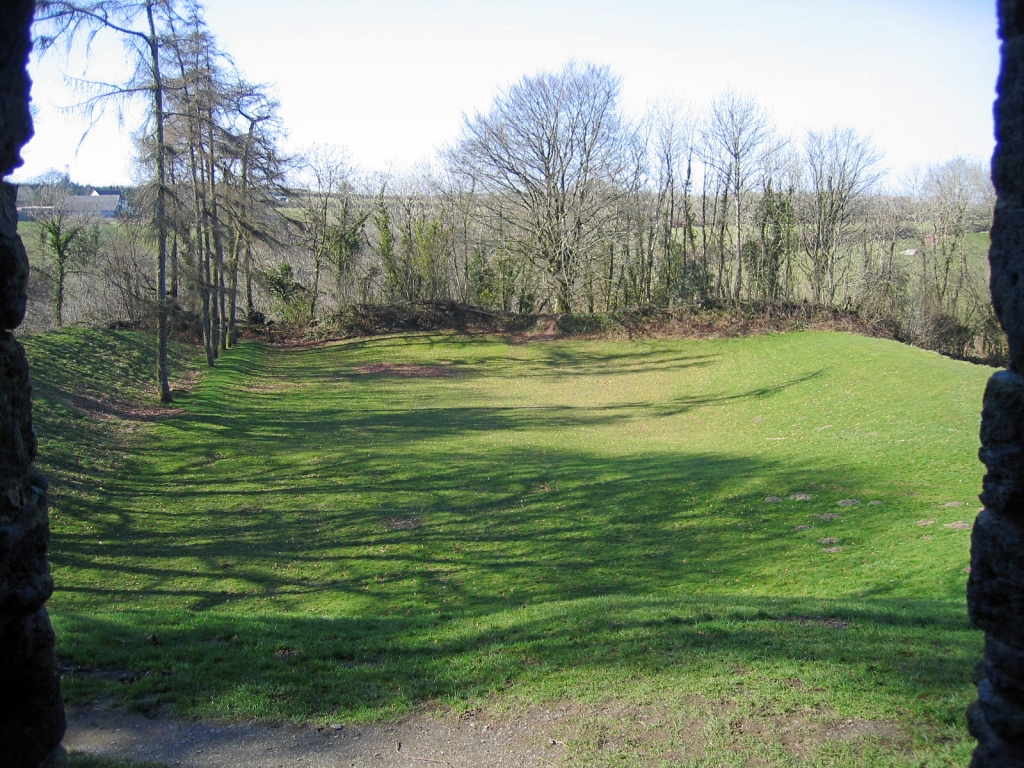 View from Lydford Castle Tower over the Bailey © essentially-england.com
View from Lydford Castle Tower over the Bailey © essentially-england.comExploring Historic Lydford
There is a small visitors car park opposite the Castle Inn in Lydford. It’s just a short walk to the Lydford Castle site where you can explore the Norman Fort and the tower and defences of the second castle. Do go down into the basement of the castle tower and imagine the fear of those who were held there in the dark and damp conditions. In the 16th century it was called “one of the most heinous, contagious and detestable places within the realm”.
For more
information about Lydford Castle you can visit the English Heritage website
here,
where you can also find an audio tour to download.
And, don’t forget to go around the corner and walk around beautiful the National Trust's Lydford Gorge!
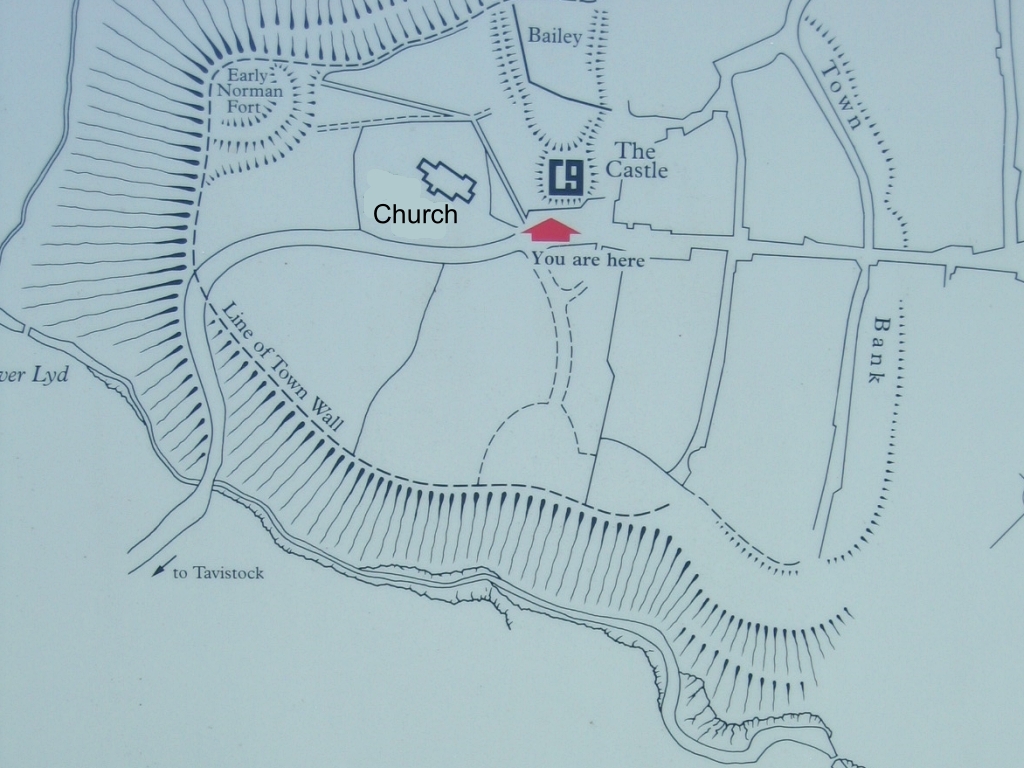 Map of Lydford Fortifications (Taken from English Heritage information board)
Map of Lydford Fortifications (Taken from English Heritage information board) © essentially-england.com
Are You Planning a Visit to Dartmoor?
Where You Could Stay
This is such a beautiful part of Devon - with the sea on one side and little villages nestling in green valleys on the other - that many people come for their holidays, often year after year. A good way to explore the area at your leisure is by renting a holiday cottage in Devon.
And here are a few examples of where you could be staying:
To see other holiday cottages in Dartmoor click here. Or check out holiday cottages in other parts of England by clicking here.
What about staying in a nice hotel?
Have you got the holiday bug, but not seen what you wanted. Check this out...
What You Could See and Do
Dartmouth and the South Devon coast are a paradise for sailors of all ages and abilities. So if messing around in boats on the water is your kind of holiday, then you're in just the right place.
But with the coastal path on one side and the Devon countryside on the other, this area is also great for walking. Besides Slapton Sands and its beautiful nature reserve there are villages, hillsides, cliffs and beaches to explore. And just a short drive will take you up to the wilds of Dartmoor, to rocks and endless skies and tales of smugglers and giant hounds.
Why not check out
- Burgh Island
- Dartmoor Ponies
- Brentor
- Lyford Castle and Gorge
- Slapton Sands
- Agatha Christie's Greenway
- The Golden Hind
- Grimspound
- Merrivale
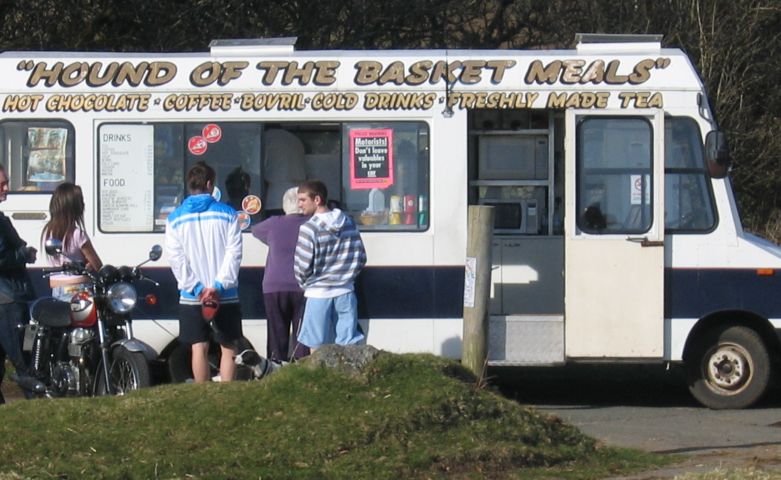 Refreshments at Hound Tor © essentially-england.com
Refreshments at Hound Tor © essentially-england.comFor more things to do in Devon return from our Lydford Castle page to the Devon page here.

